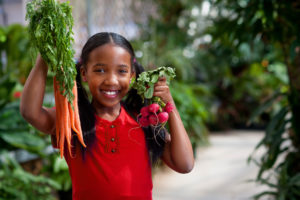Transplanting Your Garden Seedlings
go.ncsu.edu/readext?698832
en Español / em Português
El inglés es el idioma de control de esta página. En la medida en que haya algún conflicto entre la traducción al inglés y la traducción, el inglés prevalece.
Al hacer clic en el enlace de traducción se activa un servicio de traducción gratuito para convertir la página al español. Al igual que con cualquier traducción por Internet, la conversión no es sensible al contexto y puede que no traduzca el texto en su significado original. NC State Extension no garantiza la exactitud del texto traducido. Por favor, tenga en cuenta que algunas aplicaciones y/o servicios pueden no funcionar como se espera cuando se traducen.
Português
Inglês é o idioma de controle desta página. Na medida que haja algum conflito entre o texto original em Inglês e a tradução, o Inglês prevalece.
Ao clicar no link de tradução, um serviço gratuito de tradução será ativado para converter a página para o Português. Como em qualquer tradução pela internet, a conversão não é sensivel ao contexto e pode não ocorrer a tradução para o significado orginal. O serviço de Extensão da Carolina do Norte (NC State Extension) não garante a exatidão do texto traduzido. Por favor, observe que algumas funções ou serviços podem não funcionar como esperado após a tradução.
English
English is the controlling language of this page. To the extent there is any conflict between the English text and the translation, English controls.
Clicking on the translation link activates a free translation service to convert the page to Spanish. As with any Internet translation, the conversion is not context-sensitive and may not translate the text to its original meaning. NC State Extension does not guarantee the accuracy of the translated text. Please note that some applications and/or services may not function as expected when translated.
Collapse ▲Many of you have started your garden seedlings indoors and now may be the time to start transitioning them outside or to a large space. Here are some tips to make that successful.

agriculture, carrot, girl, green house, hunt microsite, raddish, red, sustainable, vegtable. Photo by Marc Hall
Hardening Off
You may have heard the tip to “harden off” your seedlings before you transplant them to your outdoor space. So what does this mean? Simply put, it means letting plants become accustomed gradually to outdoor conditions of light and temperature before you plant them outside. You can begin hardening off plants 7-10 days before you plant them outside. Start by setting your seedlings out in a sheltered, partly shaded spot for a few hours; then bring them back indoors. Each day, gradually increase the amount of time the plants spend outside until they spend the day in full sun and the night outside.
Getting your plants in the ground
A few tips to get your newly hardened off seedlings transplanted:
- Wait for a cloudy to partly cloudy day or you can plant early morning on an overcast day. If it is a full sun forecast, you can make your own temporary shade to reduce the stress on your plants.
- Water is important – one good tip is to water ahead of time. If you planting in the morning, give them a good drink the night before. You want your plants to be well hydrated but not dripping wet.
- Dig your hole in advance. The longer your little plant roots are exposed to air the more likely they are to dry out. It’s also important to plant your seedling at the same or near the same depth they were growing in their original container.
- Be gentle. If you are removing from a starter container remember to handle with care. Stems break easily and roots can be damaged.
- Water after planting. Make sure you water thoroughly. You want to make sure all the roots receive water.
- Add protection. Even if you have hardened them off, protection from full sun, wind, rain, and hail can be vital to success.
For additional tips and advice, you can visit Kids Gardening, the NC State Extension Gardening page, or contact the N.C. Cooperative Extension of Alleghany County office with any questions.



